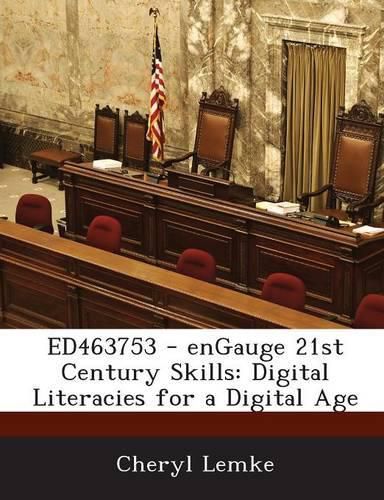Readings Newsletter
Become a Readings Member to make your shopping experience even easier.
Sign in or sign up for free!
You’re not far away from qualifying for FREE standard shipping within Australia
You’ve qualified for FREE standard shipping within Australia
The cart is loading…






The North Central Regional Educational Laboratory’s (NCREL) “enGauge” is a Web-based framework that describes six essential conditions, or system-wide factors critical to the effective use of technology for student learning. In addition to the framework, the llenGaugell Web site includes an online survey instrument that allows districts and schools to conduct online assessments of system-wide educational technology effectiveness. This publication describes a set of 21st century skills that will be increasingly important to students entering the work force. These skills are not at odds with traditional educational skills, but are, in fact, extensions of those skills, adapted to new technologies and new work environments. The educational system will be challenged to encourage the development of these 21st century skills in relevant and meaningful ways. The publication consists of five main sections, following an introduction. The first section, “Digital-Age Literacy,” discusses basic, scientific and technological literacies; visual and information literacies; and cultural literacy and global awareness. The second section, “Inventive Thinking,” focuses on adaptability/ability to manage complexity; curiosity, creativity, and risk-taking; and higher-order thinking and sound reasoning. Section three, “Effective Communication,” deals with teaming, collaboration, and interpersonal skills; personal and social responsibility; and interactive communication. The fourth section, “High Productivity,” discusses the ability to prioritize, plan, and manage for results; effective use of real-world tools; and relevant, high-quality products. Section five, “Information Technology,” identifies possible social effects with regard to information technology. Two other sections provide a brief summary and references. (Contains 43 references. ).
$9.00 standard shipping within Australia
FREE standard shipping within Australia for orders over $100.00
Express & International shipping calculated at checkout
The North Central Regional Educational Laboratory’s (NCREL) “enGauge” is a Web-based framework that describes six essential conditions, or system-wide factors critical to the effective use of technology for student learning. In addition to the framework, the llenGaugell Web site includes an online survey instrument that allows districts and schools to conduct online assessments of system-wide educational technology effectiveness. This publication describes a set of 21st century skills that will be increasingly important to students entering the work force. These skills are not at odds with traditional educational skills, but are, in fact, extensions of those skills, adapted to new technologies and new work environments. The educational system will be challenged to encourage the development of these 21st century skills in relevant and meaningful ways. The publication consists of five main sections, following an introduction. The first section, “Digital-Age Literacy,” discusses basic, scientific and technological literacies; visual and information literacies; and cultural literacy and global awareness. The second section, “Inventive Thinking,” focuses on adaptability/ability to manage complexity; curiosity, creativity, and risk-taking; and higher-order thinking and sound reasoning. Section three, “Effective Communication,” deals with teaming, collaboration, and interpersonal skills; personal and social responsibility; and interactive communication. The fourth section, “High Productivity,” discusses the ability to prioritize, plan, and manage for results; effective use of real-world tools; and relevant, high-quality products. Section five, “Information Technology,” identifies possible social effects with regard to information technology. Two other sections provide a brief summary and references. (Contains 43 references. ).